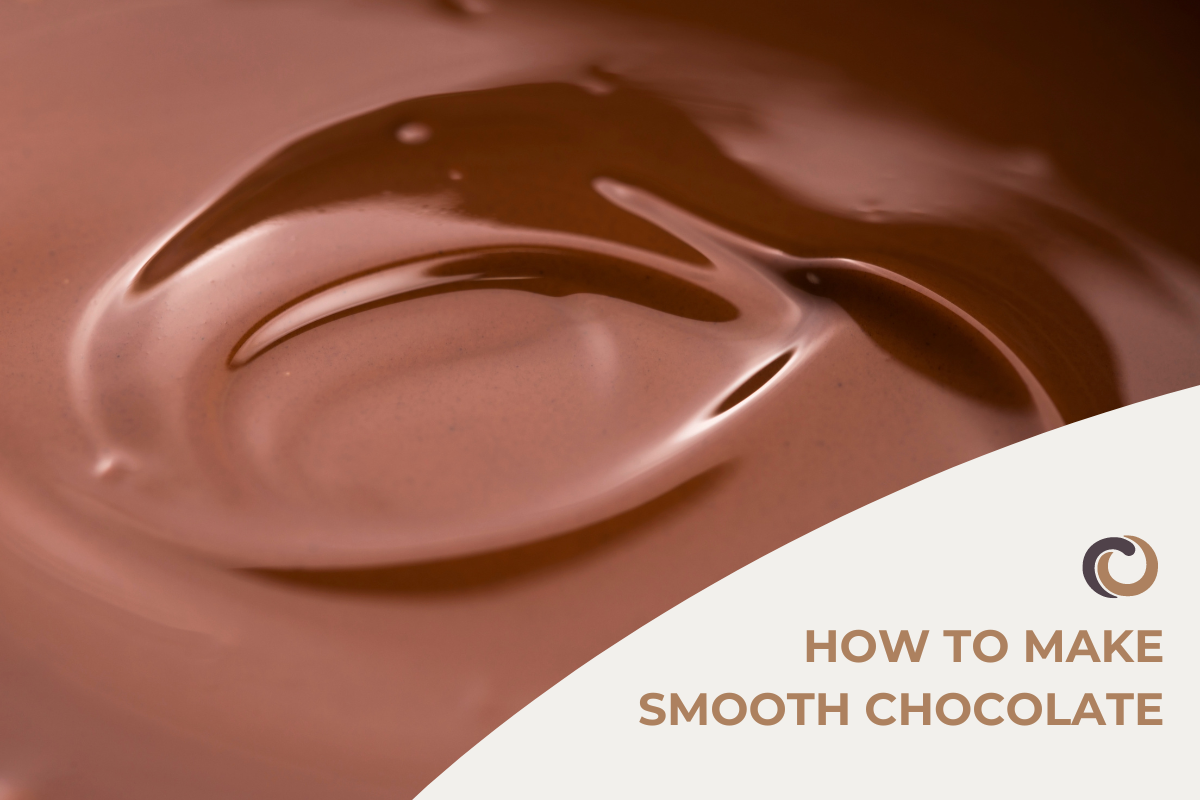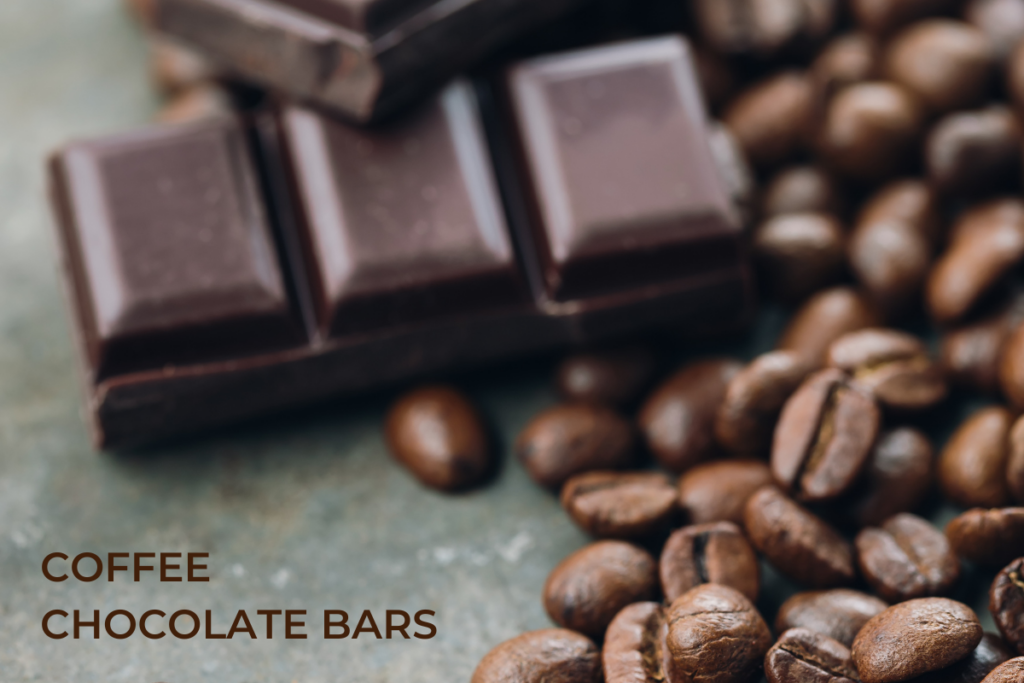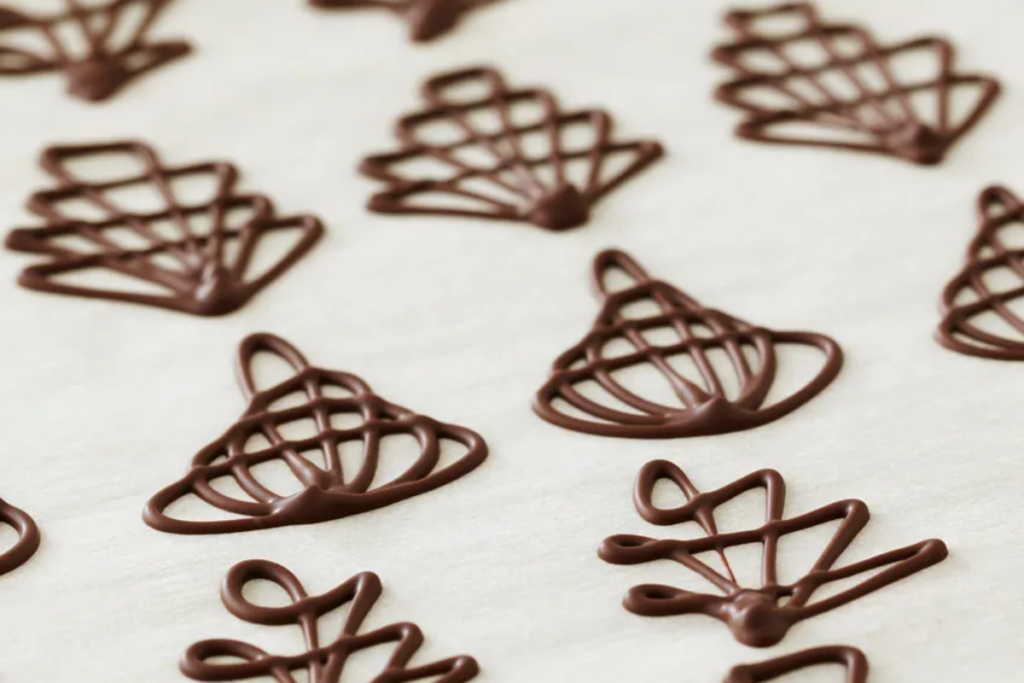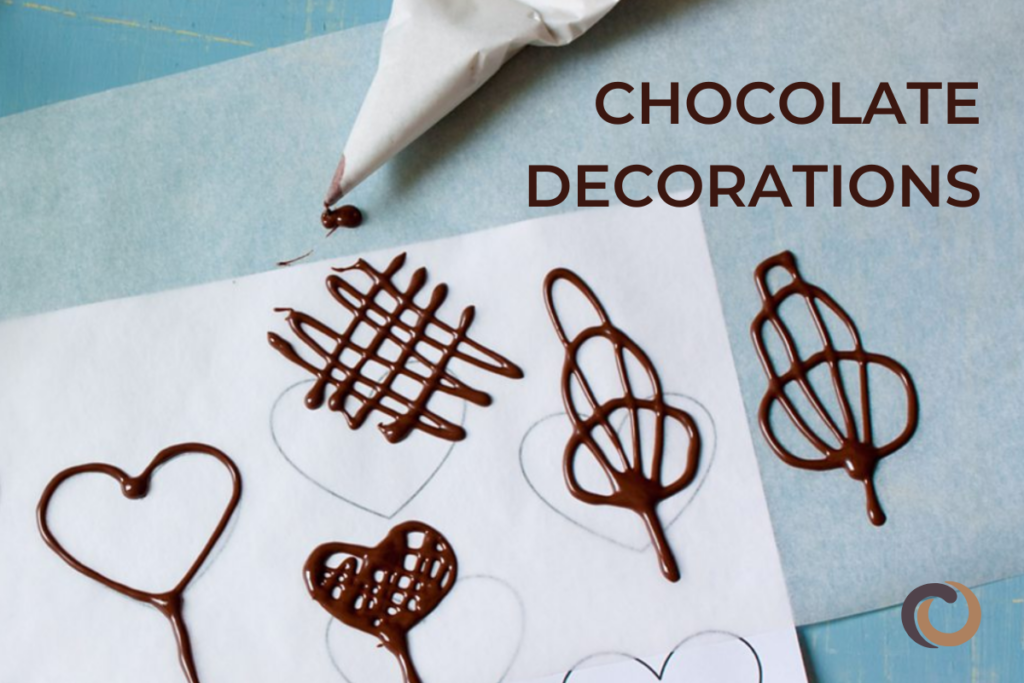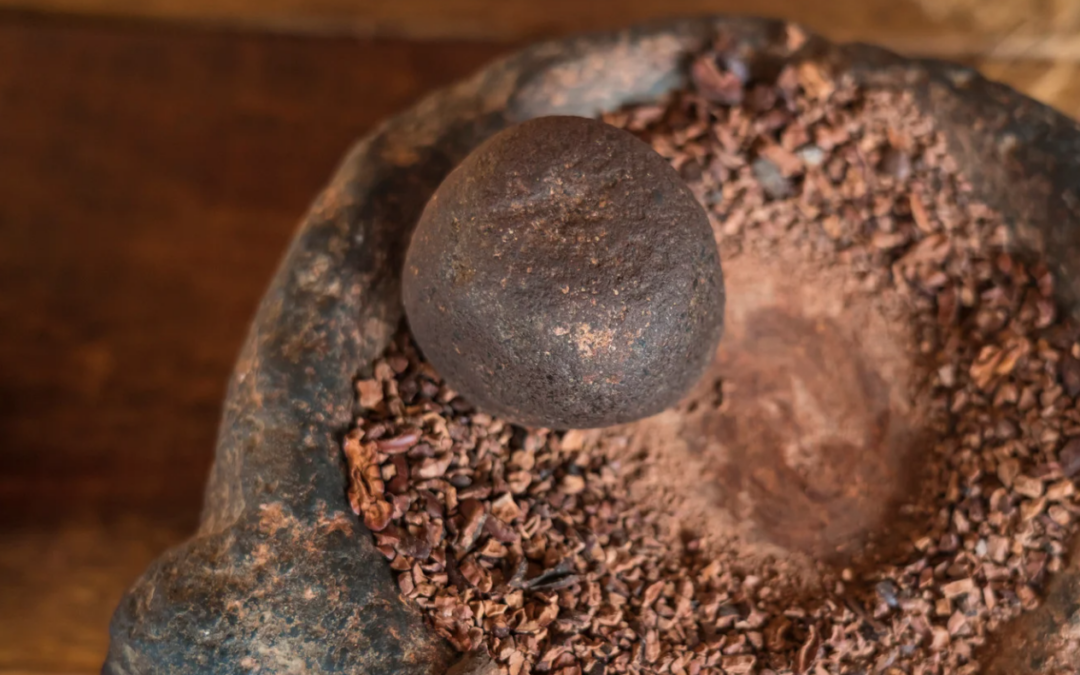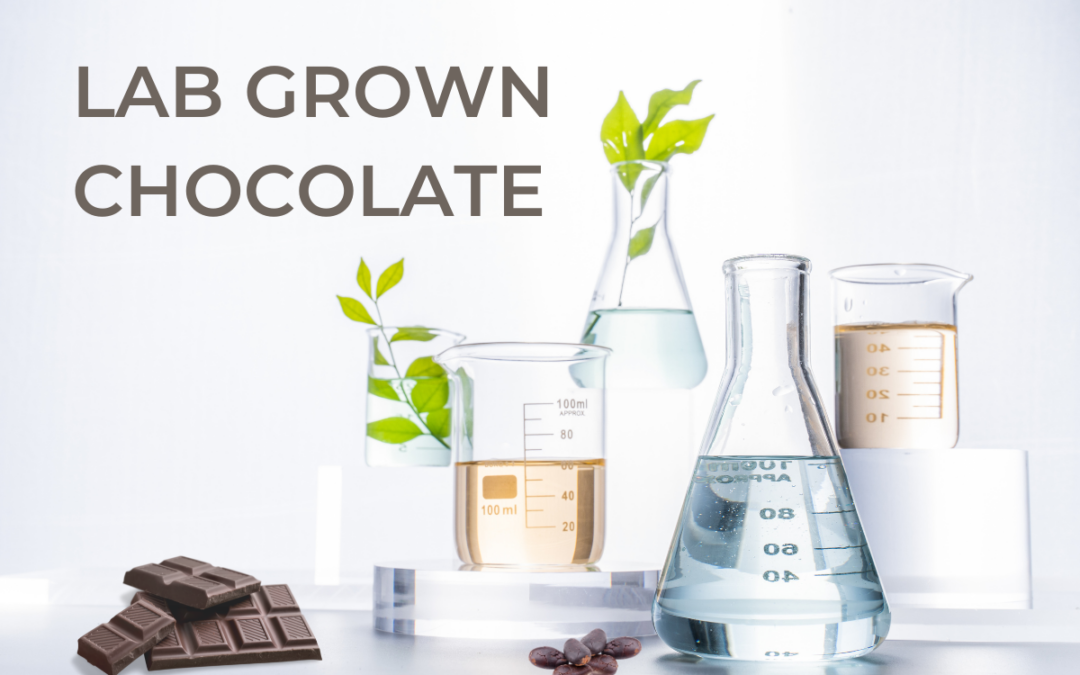Making smooth, silky chocolate is both an art and a science. Knowing how to get that perfect texture is key. In this article, we’ll explain the theory of what makes chocolate smooth and the practice of how to do it. From understanding chocolate composition to mastering the tempering process, you’ll learn the secrets to making chocolate that melts perfectly in your mouth and provides a decadent mouth feel. Get ready to dive into the delicious world of chocolate-making to achieve a professional-quality finish at home.
Understanding chocolate composition
It’s essential to understand chocolate’s composition to understand how to make great, smooth chocolate. Chocolate is a complex combination of ingredients that harmonize to create its unique texture and flavor. First, let’s review the basics of chocolate. Chocolate is a suspension, not an emulsion. In melted chocolate, particles of sugar and cocoa bean are floating in fat (cocoa butter), whereas an emulsion is a mixture of fat and water, like oil and vinegar used to make a salad dressing. When you shake them together, the two seem to mix but aren’t really combined. Chocolate, on the other hand, has only fat and doesn’t contain any water (nor liquid milk, even in a milk chocolate) so it’s not an emulsion; it’s a suspension where the particles are suspended in cocoa butter.
- Cocoa Butter: This natural fat from the cocoa bean is essential for the smooth, melt-in-your-mouth texture of chocolate. The quality and proportion of cocoa butter can significantly affect the chocolate’s consistency and melt properties. Cocoa beans are normally about 50% cocoa butter, but additional cocoa butter can be added to increase smoothness.
- Cocoa Solids: These are the non-fat part of the cocoa bean that gives chocolate its deep, rich flavor. The percentage of cocoa solids in a chocolate bar is a good indicator of its intensity and bitterness. Cocoa solids are one of the major components that affect chocolate smoothness. If these cocoa solids are not ground sufficiently small, the chocolate will have a texture or grittiness to it. Particle size is a key factor in chocolate smoothness.
- Sugar: Sugar is added to balance the bitterness of the cocoa solids, contributing sweetness to the flavor profile of the chocolate. But sugar also affects the mouthfeel and texture of the chocolate, which can vary depending on the type of sugar used. If the sugar isn’t sufficiently refined, the chocolate will taste gritty. The amount of sugar varies depending on whether the chocolate is dark, milk, or white.
- Milk Solids: Milk solids are added to milk chocolate and white chocolate to add creaminess and a softer texture (milk fat also contributes to overall smoothness). Milk Solids also influence the color and flavor, making milk chocolate lighter and more mellow than dark chocolate. As with the cocoa solids and sugar, if the milk solids are not refined properly, they will make the chocolate gritty.
- Lecithin: This is an emulsifier, often derived from soy or sunflower, used to improve the flow properties of melted chocolate but also has an impact on the texture of solid chocolate. Lecithin is typically used by industrial chocolate makers and avoided by craft chocolate makers.
- Flavorings: Vanilla is a common addition that enhances the overall taste of chocolate, but other flavorings like spices, fruits, or nuts can also be used to create unique and complex flavors. Spices can contribute texture to chocolate if not refined along with the chocolate ingredients.
Cocoa beans and their role in smoothness
Cocoa beans are the essence of chocolate, delivering the rich, deep flavors we enjoy. These beans are harvested from cacao trees and go through fermentation, drying, roasting, and winnowing to create cocoa nibs, the main ingredient in chocolate. Cocoa beans shape the unique taste, aroma, and texture of final chocolate, making them essential in its production. Knowing the role of cocoa beans helps us appreciate the detailed journey from bean to bar.
Grinding and refining: The key to smoothness
Together, grinding and refining transform cocoa nibs or gritty cocoa mass into velvety, luxurious chocolate, highlighting their importance in achieving the desired smoothness and melt profile.
Grinding
The process starts with grinding the roasted cocoa nibs into a thick paste called cocoa mass or cocoa liquor. This stage releases the cocoa butter from the cells of the cocoa bean while reducing the particle size of the cocoa solids, contributing to a smoother mouthfeel.
Refining
Refining is a crucial process in chocolate-making where all the chocolate ingredients are mixed with the cocoa liquor and ground together until they reach the desired particle size (typically below 25 microns). This technique smooths out the texture and enhances the flavor of the chocolate by:
- Reducing Particle Size: Refining breaks down particles to an even finer consistency.
- Evaporating Unwanted Acids: The prolonged mixing helps to evaporate volatile acids and undesirable flavors.
- Exposing to Air: Aeration helps to mellow the chocolate, making it smoother and less bitter.
Tempering chocolate
Tempering is essential in making smooth chocolate by:
- Stabilizing Crystals: Chocolate contains cocoa butter molecules, which can form different types of fat crystals. Tempering ensures that only the most stable crystals form.
- Providing a Smooth Texture: Properly tempered chocolate has a smooth, glossy finish and a satisfying snap. Tempering prevents the chocolate from becoming grainy or dull looking, which is essential for high-quality chocolate making.
- Enhancing Appearance: Tempered chocolate has a shiny, appealing surface, making it visually attractive and professional-looking.
- Improves Shelf Life: Tempering also helps chocolate maintain its quality over time. Properly tempered chocolate resists blooming, which is when fat or sugar rises to the surface, creating a cloudy appearance.
Check out this comprehensive article on chocolate tempering. It covers the science behind the process and explains the two easiest ways to temper chocolate.
Storing and handling your finished chocolate
Once you’ve made your perfectly smooth chocolate, you want to make sure that it stays that way. Proper storage and handling are essential to keep your chocolate fresh and maintain its smooth texture.
Keep your finished chocolate in a cool, dry place away from direct sunlight and strong odors. Ideal storage temperature is between 59-65°F (15-18°C). Avoid refrigerating chocolate as it can cause condensation and affect its texture.
Handle chocolate with clean, dry hands to prevent transferring moisture or oils, which can cause streaks or bloom. If cutting or breaking chocolate, use a clean knife or tool to maintain its appearance.
We hope that you find all this information helpful in making the smoothest chocolate possible.
If you have any questions or comments, feel free to contact us through our social media channels. We are @cocoterra_co on Instagram and Pinterest and @cocoterraco on X (aka Twitter) and Facebook.For more great articles and recipes, check out the rest of our CocoTerra blog.

